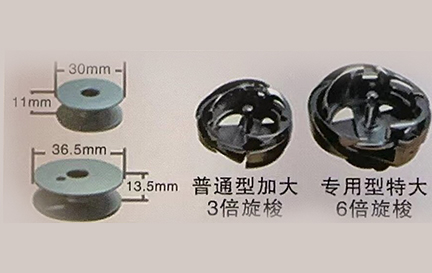chain stitch machine
The Chain Stitch Machine A Versatile Tool in Textile Manufacturing
The chain stitch machine is a vital piece of equipment in the textile and garment manufacturing industry, revered for its versatility, speed, and unique stitching capabilities. Unlike traditional lockstitch machines, which use a single thread and a bobbin to create stitches, chain stitch machines utilize a series of interconnected threads that form a chain-like pattern. This distinctive method not only contributes to the aesthetic appeal of stitched products but also enhances the durability and stretchability of the seams.
History and Evolution
The origins of the chain stitch can be traced back to the early 19th century when sewing machines began to revolutionize textile production. The first machine to operate on the principle of chain stitching was patented by Walter Hunt in 1834. Since then, chain stitch machines have undergone significant improvements, incorporating advancements in technology, design, and automation. The modern chain stitch machine boasts features like electronic controls, automatic thread trimming, and adjustable stitch lengths, making it a crucial tool for meeting the demands of contemporary garment manufacturing.
Types of Chain Stitch Machines
Chain stitch machines come in various forms, each tailored to specific sewing tasks. The primary types include
1. Single-thread Chain Stitch Machines These machines use a single thread to create a chain stitch, often employed in lightweight fabrics where flexibility is essential.
2. Two-thread Chain Stitch Machines These are more commonly used in industrial applications. They incorporate both a needle and a looper thread, allowing for a stronger and more secure stitch, perfect for medium to heavy fabrics.
3. Three-thread Overlock Machines These machines are widely used for finishing raw edges and providing a clean finish to seams in knit fabrics. They not only create a chain stitch but also effectively trim excess fabric, reducing fraying.
4. Cover Stitch Machines Similar to overlock machines, cover stitch machines use multiple threads to create a flat seam, often seen in the hems of garments like T-shirts and athletic wear. This type of stitch is elastic, allowing for improved wearability and comfort.
Applications in the Garment Industry
Chain stitch machines are integral to various applications within the garment industry. Their ability to produce strong, flexible, and aesthetically pleasing seams makes them ideal for constructing everything from everyday clothing to specialty items.
chain stitch machine

- Denim Production Chain stitch machines are heavily utilized in denim manufacturing, particularly in creating the classic chain-stitched hem on jeans. This not only reinforces the seam but also adds a vintage aesthetic that appeals to consumers.
- Activewear In the production of athletic wear, the stretchability of chain stitches allows garments to move with the body, making them comfortable for physical activities while ensuring durability
.- Decorative Stitching Beyond functional seams, chain stitch machines can be employed for decorative purposes, adding unique designs and embellishments to garments. This versatility enables manufacturers to cater to diverse fashion trends and consumer preferences.
Advantages of Using Chain Stitch Machines
The popularity of chain stitch machines in garment production can be attributed to several key advantages
1. Speed Chain stitch machines are capable of sewing at high speeds, significantly increasing production efficiency and reducing manufacturing time.
2. Durability The unique structure of chain stitching makes it less prone to unraveling compared to traditional stitches, enhancing the longevity of the sewn product.
3. Flexibility The elasticity of chain stitches allows for greater movement in stretchable fabrics, making them ideal for a wide range of applications, especially in the sportswear sector.
4. Cost-Effectiveness With their high-speed operation and durability, chain stitch machines often reduce labor costs and fabric waste, contributing to more cost-effective production processes.
Conclusion
The chain stitch machine plays an indispensable role in modern textile manufacturing, combining historical significance with technological advancement. Its versatility across various fabrics and applications, along with its numerous advantages, solidifies its position as a crucial tool for garment manufacturers. As the industry continues to evolve, the chain stitch machine will undoubtedly maintain its relevance, adapting to meet the ever-changing demands of fashion and functionality.
-
Boost Production Efficiency with a Pattern Sewing MachineNewsAug.29,2025
-
Industrial Excellence with the Best Heavy Duty Sewing MachineNewsAug.29,2025
-
Precision and Power with the Best Pattern Sewing MachineNewsAug.29,2025
-
Reliable Bulk Packaging Starts With the Right FIBC Sewing MachineNewsAug.29,2025
-
Advanced Packaging Solutions: Elevate Productivity with Jumbo Bag Sewing Machine and Industrial Stitching EquipmentNewsAug.29,2025
-
High-Performance Solutions for Bulk Packaging: FIBC Sewing Machine and MoreNewsAug.29,2025
-
Maximize Efficiency with an Industrial Cylinder Arm Sewing MachineNewsAug.28,2025


























